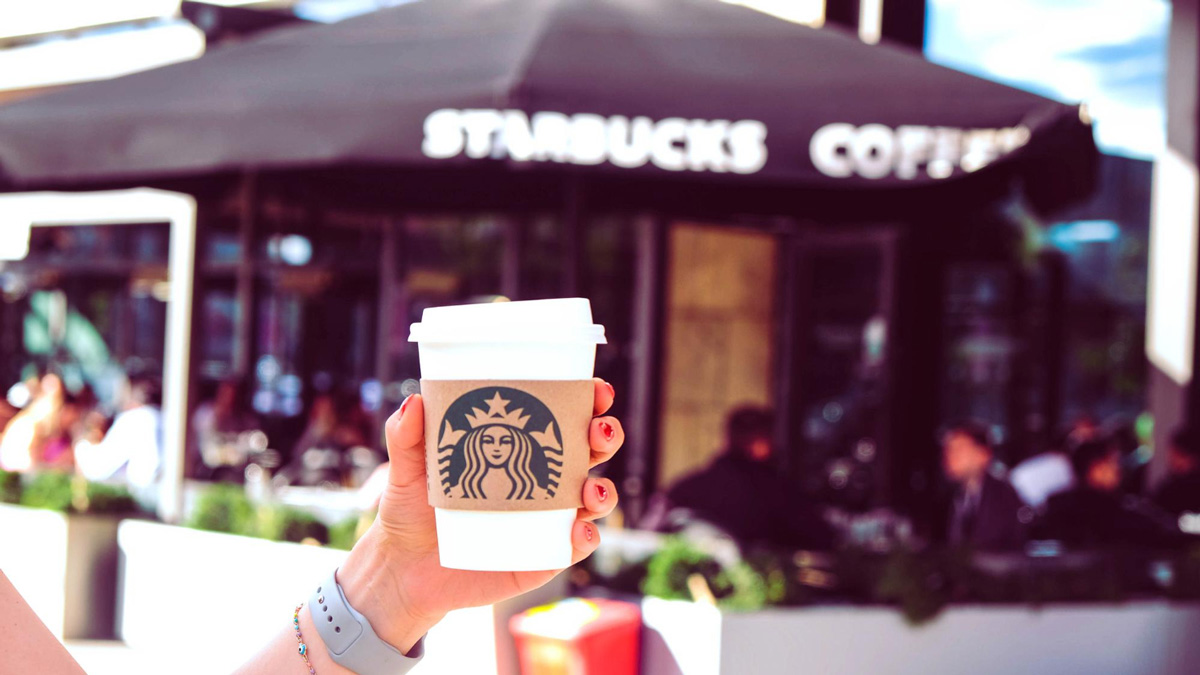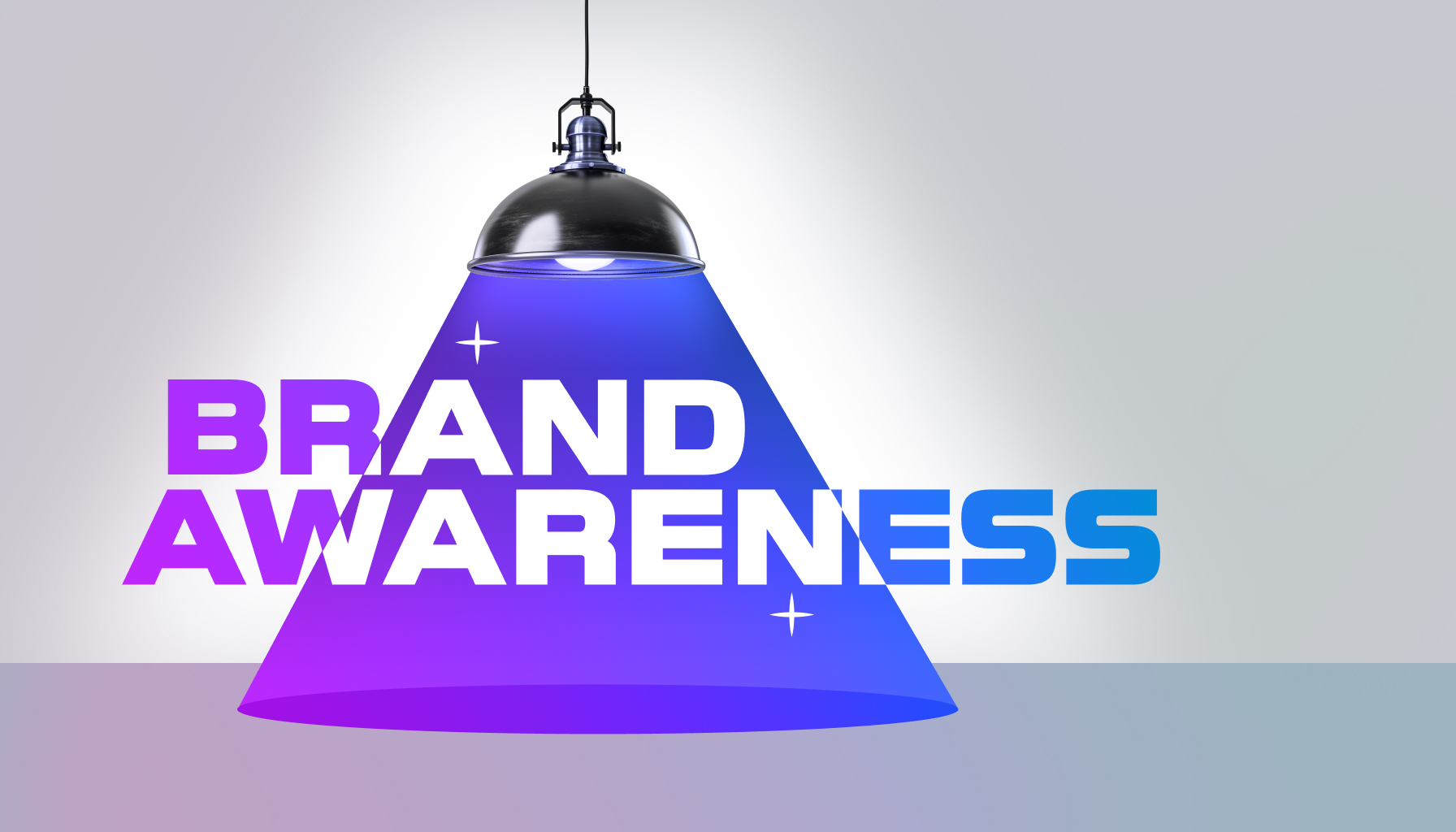
Imagine you’re standing in a bustling store aisle, surrounded by countless products competing for your attention. How does one brand stand out to you in this sea of options?
That’s where the magic of brand awareness comes in. It makes you reach for a familiar logo or choose a trusted name over an unknown competitor.
There is no shadow of a doubt that reaching that point is quite hard and challenging; nonetheless, with great effort and strategic implementation, it’s feasible. Right now, we are going to learn different strategies by which you can make your brand name memorable in the customers’ mind
What Is Awareness in Branding?
Brand awareness focuses on ensuring your brand is known to consumers. When people recognize, recall, and prefer your brand over others, you’ve made an impact in the social or cultural world, and they’re familiar with what you offer. Consider the brands so deeply embedded in our routines that their names become synonymous with the products themselves, such as using “Google” as a verb for searching the web or requesting a “Band-Aid” when we need a bandage. Achieving this kind of recognition takes time, but it’s an incredible asset for any brand once established.
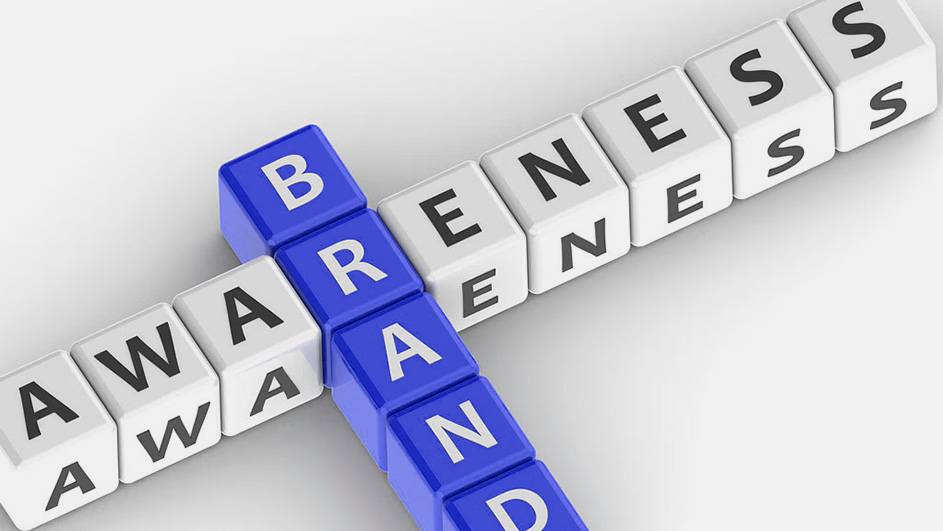
While there are instances where impulse buying or low-engagement products might not require prior brand awareness, focusing on increasing brand awareness reduces the reliance on chance encounters. Instead, you actively draw customers to your brand by implementing effective brand awareness campaigns. It increases the likelihood of conversion and long-term loyalty.
According to a study by HubSpot, 39% of social media marketing and 22.4% of video marketing focused on increasing brand awareness. Therefore, investing in brand awareness campaigns is essential for sustaining relevance and competitiveness in the market. However, with the rise of social media, brands have a special opportunity to engage directly with their target audience and cultivate recognition and loyalty.
Aided Brand Awareness
Aided brand awareness occurs when customers identify a brand through certain hints or prompts, such as presenting them with a brand’s logo, slogan, or other identifiable features. Additionally, this type of awareness depends on outside elements to spark recognition. For instance, seeing a specific logo or product packaging can help consumers remember the brand associated with it. This concept is crucial for market research and marketing initiatives, as it allows businesses to measure the impact of their branding strategies and determine how well consumers recognize their brand.
Non-Aided Brand Awareness
On the other hand, non-aided brand awareness refers to consumers’ ability to recall a brand without any prompts or cues. This type of awareness is a deeper brand familiarity and connection with consumers. It shows that your brand has made a lasting impression on consumers’ minds, allowing them to recall it spontaneously when prompted with a product or service category. Non-aided brand awareness is often considered a stronger indicator of brand strength and consumer loyalty. It reflects the brand’s intrinsic appeal and relevance to consumers’ needs and preferences.
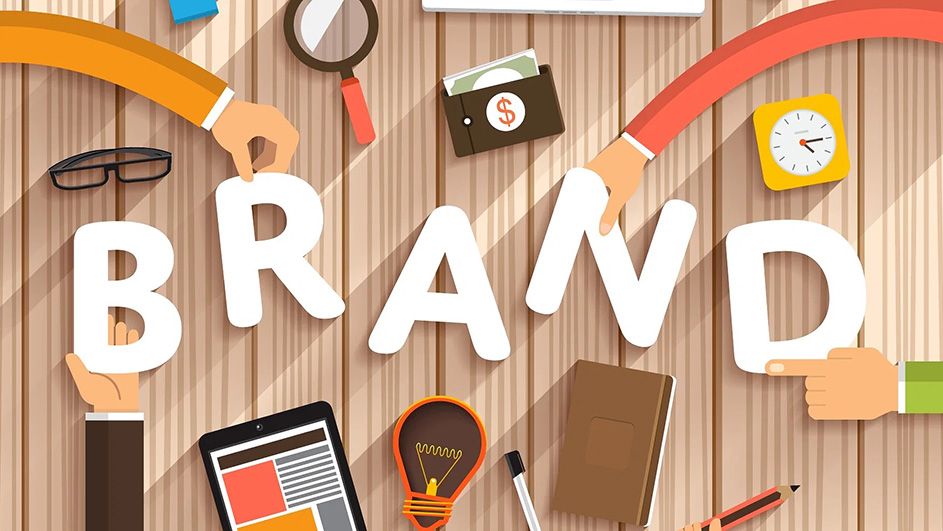
Both aided, and non-aided brand awareness are crucial in building brand recognition and consumer engagement. Aided awareness helps us see if people recognize specific things about our brand, like the logo or packaging. Whilst, non-aided awareness shows how much our brand sticks in people’s minds all on its own. By understanding both, businesses can improve their marketing to ensure people remember their brand and keep returning for more. It’s like having two secret weapons to make your brand stand out and succeed!
Levels of Awareness
Brand awareness has four levels. Understanding these steps helps you ensure more people notice your brand, build stronger bonds with your customers, and take your business to the next level.
Zero Awareness
Zero awareness is self-explanatory and as exact as it sounds: Consumers have no awareness or recognition of your brand. It’s like being lost in a crowd where no one knows your name or what you offer.
In this stage, your primary challenge is to break through the noise and capture the attention of potential customers. Without awareness, there can be no consideration or purchase.
Brand Recognition
Brand recognition is the starting point of becoming familiar with a brand. Even if you’re not familiar with it, you can still recognize it visually, like recognizing someone you know in a crowded area. A Study by Global Banking and Finance Review showed that 71% of customers stated that it was important to recognize a brand before making a purchase.
Brand recognition requires consistent exposure through marketing efforts, such as advertising and social media presence. The goal is to make your brand visible and memorable, even if consumers aren’t actively seeking it.
Brand Recall
Brand recall is a step beyond mere recognition. It activates consumers’ memories so they can identify your brand within a product category without any external hints. It’s equivalent to remembering a friend’s name without actually seeing them. Building such recall involves generating meaningful associations with your audience, which typically requires storytelling, emotional engagement, and consistently positive brand experiences.
Top-of-Mind Awareness
Top-of-mind awareness represents the pinnacle of brand recognition. Your brand is the first thing that comes to consumers’ minds when they think about a particular product or service category. It’s like being the default choice without even trying.
Achieving top-of-mind status requires consistent reinforcement and differentiation in consumers’ minds. It might involve innovative marketing campaigns, superior customer service, or unique selling propositions that set your brand apart.
Top-of-mind awareness can sometimes become a double-edged sword. A prime example of this dilemma is Google’s struggle to protect its trademark in the face of widespread adoption of the term “Google” as a generic verb for searching the internet.
Competitors can benefit from it as consumers may use their brand names instead, further diluting the original brand’s distinctiveness. So, maintaining top-of-mind awareness while safeguarding against genericide requires strategic branding efforts.

To sum up, getting your brand from unknown to top-of-mind is challenging but rewarding. Each of the four steps is an opportunity to build stronger relationships with customers, which could potentially influence their purchases.
The Importance of Brand Awareness
Brand awareness lays the groundwork for building successful businesses. How can people buy from you if they don’t know about your brand?
Brand awareness is the starting point of the customer journey. It draws people in and makes them want to learn more about your offerings.
Increased Sales
People who know about your brand are more likely to buy from you. It’s like being the familiar face in a crowded room; customers feel comfortable choosing a brand they recognize. That recognition can lead to more sales because people trust what they know.
When your brand is more visible to people, they prefer your products or click through your website. Enhancing your brand awareness essentially means opening more doors to sales. And, of course, who wouldn’t appreciate that?
Greater Customer Loyalty
Building strong brand awareness isn’t just about attracting new customers – it’s also about keeping the ones you already have. Customers who know and trust your brand are likely to stick around.
They’ll return to you repeatedly because they know what to expect from your products or services. They might even become brand advocates, spreading the word about your business to their friends and family. This loyalty is priceless and can be a huge asset to your business in the long run.
Standing out from the Competition
In the busy world of business, there’s a lot of competition. With numerous rivals striving for attention, it can be challenging to distinguish yourself. However, brand awareness is the solution. Once your brand is recognized by people, you gain a competitive advantage.
When customers recognize your brand and its values, they will choose you over other options. By prioritizing the development of your brand awareness, you’re not just keeping pace with competitors; you’re surpassing them.
In conclusion, building brand awareness is like laying the foundation for a successful business. It’s not just about getting your name out there; it’s about creating trust, loyalty, and preference among your target audience. You position yourself for long-term success and growth by building your brand’s visibility and reputation.
Measuring Brand Awareness
Measuring brand awareness gives insight into how well people recognize your brand and whether your marketing strategies are effective.
Social listening is like eavesdropping on conversations revolving around your brand on social media. It helps you build awareness by tracking how often your brand is mentioned, where it’s mentioned, and whether the conversation is positive or negative.
To measure it, you need to consider a few key metrics. First, check out the social media mentions. It tells you how many people saw your brand mentioned online. The sentiment score is another metric that tells you if mentions are good, bad, or somewhere in between, giving you a feel for how people feel about your brand.
The Net Promoter Score (NPS) also shows how likely customers are to recommend your brand based on what they see online. By tuning into these metrics with social listening, you’ll get a clear picture of your brand’s awareness and how to make it even better.
Social Share of Voice
Social share of voice tells you how much of the conversation in your industry is about your brand. Tools like Mention.com or TweetDeck help you monitor your brand’s presence across multiple social media channels.
Just divide the number of times your brand was mentioned by the total number of brand mentions (including yours and your competitors’) and multiply by 100. This will give you a percentage that shows your brand’s share of the overall social media chatter in your industry.
It helps you understand how much attention your brand gets compared to the competition. A higher SOV means your brand dominates social media and grabs more attention.
If your SOV is lower than your competitors, it is time to increase your social media presence. So, keep monitoring your social share of voice. It’s a handy tool for measuring your brand’s awareness and staying ahead of the curve.
Direct Traffic
Have you ever wondered how many people are typing your website directly into their browser? That’s direct traffic. It means knowing about your brand and typing your website’s URL directly into the search bar.
Tracking direct traffic is a simple way to measure your brand’s awareness. Platforms such as Google Analytics allow you to track the volume of visitors who reach your website directly, without clicking on other links.
Keep watching this number as time goes on. If it’s going up, it means more people are recognizing your brand and typing it into search engines themselves. You can also see how many people search for related words and what your competitors do.
Backlinks
Backlinks are like approvals from other websites to yours, showing that people trust your brand. Tools like Ahrefs, Moz, or Semrush help you find these links and see where they come from.
They also tell you about the people who visit those sites, giving you insight into your brand’s reach and awareness. Understanding this data helps you improve your online presence and assess the effectiveness of your brand awareness efforts.
Adding backlink analysis to your toolkit lets you stay ahead of the competition and keep your brand visible digitally.
Third-Party Publicity
Earned media coverage, also known as third-party publicity, happens when other people, like bloggers or journalists, write about your brand without you paying them. It helps to see how well people know your brand.
The focus here is on organic exposure and how external sources perceive and discuss your brand, giving you insight into your brand’s reputation and visibility in the wider community.
You can measure this using social listening or brand tracker tools. These tools help you see where people are talking about your brand online. For example, you can use tools like Ahrefs or Moz to look up your brand name.
If you find mentions of your brand that aren’t linked back to your website, you can reach out to those sites and ask them for a backlink.
It helps you get more backlinks, which can improve your brand’s visibility on the internet. Tracking your brand’s mentions online can give you an idea of how well-known it is among your target audience.
Surveys and Questionnaires
Brand awareness surveys ask if people know about your brand, remember it, and what they think of it. They help you see how much your brand is known by the people you want to reach. However, it can be challenging, as bias and errors in the questions can lead to inaccurate answers. Therefore, involving experts in utilizing proper methods and ensuring accurate measurement is important.
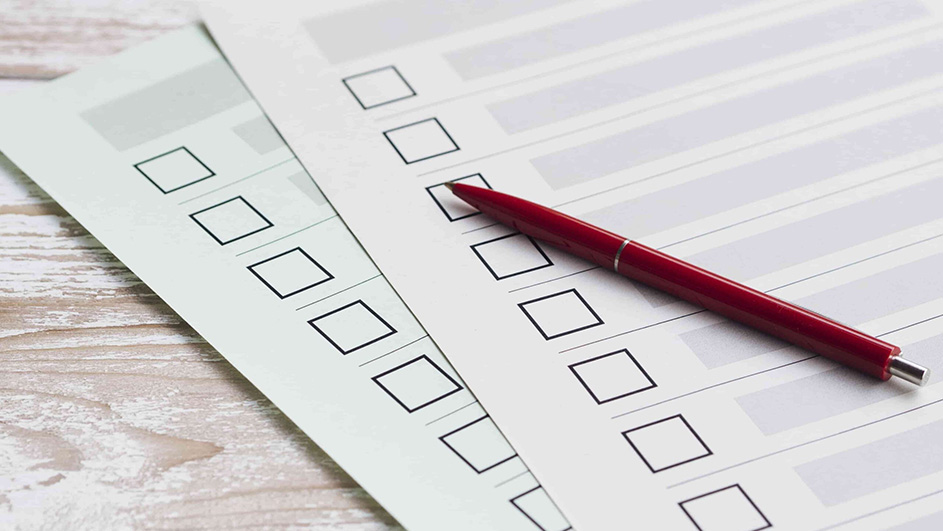
Besides, defining your target audience is essential to ensure the questions are relevant and meaningful. Survey data can enhance your brand’s identity and ensure that it stands out in the minds of your audience. Making sure you ask the right questions that connect with your audience’s experiences through email surveys, online polls, or phone interviews is really important. When you look at the answers, you can improve how people see your brand and make sure they remember it well.
Content Marketing Performance
Content marketing involves developing and sharing valuable content to attract and engage a target audience. One way to measure its effectiveness is by looking at how well your website ranks on search engine results pages (SERPs).
Higher visibility for your website increases the chances of people discovering your brand. Monitoring key metrics like keyword rankings, organic traffic, and conversions can help you evaluate your content’s performance and how many new visitors find your site each month or day.

To track content marketing performance, you can also use tools like Ahrefs or Moz to monitor traffic and keyword rankings. These tools show you which keywords drive traffic to your site and how well your site ranks for those keywords.
Additionally, using a tool like Google Analytics allows you to monitor conversions, such as sign-ups or purchases, resulting from your content efforts. It gives valuable information about the effectiveness of your content marketing strategies to make adjustments as needed to improve brand awareness and engagement.
KPIs
Key Performance Indicators (KPIs) are valuable tools to measure brand awareness. They offer insights into your brand’s visibility and engagement with your target audience.
Traffic KPIs, such as unique users, time spent on a page, bounce rate, and return visitors, provide valuable data into how users interact with your website. Unique users indicate the popularity of your site, while time spent on the page and bounce rate help gauge user engagement and satisfaction.
Additionally, social KPIs are important in measuring brand awareness across social media platforms. Impressions, engagements, click-through rates, and shares offer insights into how your content engages with your audience and reaches potential customers.
Against the popular notion, the number of followers isn’t always the most important KPI for brand awareness. Instead, focusing on the percentage of meaningful brand interaction and engagement from existing followers is crucial.
By tracking these KPIs effectively, you can comprehensively understand your brand’s awareness and make informed decisions to enhance your marketing strategies.

You can gain valuable data about how well your target audience knows and perceives your brand by analyzing key metrics across various channels. Remember, brand awareness is not just about numbers; it’s about building connections and resonating with your audience.
Implementing simple yet effective measurement strategies can strengthen your brand’s presence and drive meaningful engagement.
Strategies to Increase Brand Awareness
Boosting brand awareness is crucial for businesses looking to extend their outreach and attract new customers. Setting yourself apart from the competitors in a crowded marketplace requires strategic approaches that connect with your intended audience.
Various effective strategies exist to enhance brand visibility and engagement, from storytelling to leveraging user-generated content. Here, we’ll explore nine simple yet powerful strategies business owners and marketers can implement to boost brand awareness and drive business growth.
1.Tell a Story
Sharing a compelling narrative about your brand can captivate your audience’s attention and create a memorable impression. Whether it’s the story of how your business started, the journey of your products, or the impact you’ve had on customers’ lives, storytelling humanizes your brand. It facilitates a deeper connection with your audience.
For a related read, check out: Mastering Brand Storytelling: A Comprehensive Guide
2.Create a Referral Program
Using word-of-mouth marketing, where happy customers tell their friends about your brand, can help your brand reach more people. By giving rewards or gifts to customers who refer others, you can make use of their friendships and connections to find new customers.
3.Use Strategic Content Marketing
Making helpful and interesting content that your target audience likes is really important for showing your brand as a leader in your industry. Whether you’re writing blogs, making videos, creating pictures, or posting on social media, good content marketing teaches, entertains, and connects with your audience while also talking a bit about your brand.
4.Partner with Other Brands
Collaborating with complementary brands can expose your brand to new audiences and enhance credibility through association. Look for chances to co-create content, host joint events, or cross-promote each other’s products or services to benefit from increased mutual exposure.
5.Engage with Influencers
Influencer marketing has been a powerful strategy for brands to reach and engage authentically with their target audience. Collaborating with influencers whose values mirror those of your brand can increase the reach of your message and drive brand awareness through their trusted recommendations and endorsements.
6.Attend or Host Events
Participating in industry events and trade shows or hosting workshops and seminars provides valuable opportunities to network with potential customers, display your products or services, and reinforce your brand’s authority.
7.Running Contests and Giveaways
Setting up competitions or giveaways on social media platforms can generate excitement and encourage user participation, increasing brand visibility and engagement. You can incentivize individuals to share your content and endorse your brand by providing attractive prizes or incentives.
8.Influencing Local Communities
Building a strong presence in your local community through sponsorships, partnerships, or participation in local events can help solidify your brand’s reputation and loyalty among local customers. Supporting community initiatives or charities aligning with your brand values can enhance goodwill and positive brand associations.
9.Capitalizing on User-Generated Content (UGC)
Encouraging customers to create and share content highlighting your products or services showcases authentic testimonials and cultivates a sense of community around your brand.
User-generated content is powerful social proof and can significantly influence potential customers’ perceptions and purchasing decisions.
Tracking brand awareness metrics is essential to Evaluating the effectiveness of your efforts and making necessary adjustments. Utilizing tools like Google Analytics, social media insights, and brand monitoring platforms allows you to continuously measure key indicators like website traffic, engagement rates, social media mentions, and sentiment analysis.
This regular measurement empowers you to rethink and redefine your strategies based on real-time data, alter tactics that may not yield desired results, and refine your approach to better engage with your target audience.
11.Immersive Experiences
Immersive technology has emerged as a game-changing strategy. Imagine your customers interact with your products or explore your brand story in augmented reality.
These immersive brand experiences create memorable encounters that go beyond traditional marketing methods. You can develop more profound connections with your target audience by incorporating VR, AR, or MR into your brand strategy.
Immersive technology is a tool for transporting your customers on a memorable journey with your brand. Whether offering virtual tours of your facilities, allowing customers to customize products in AR, or hosting virtual events that bring people together from around the globe, immersive experiences enhance your brand presence.
Through this strategy, you engage your audience on a whole new level and demonstrate your brand’s commitment to innovation and customer-centricity.
Our services encompass everything you need to create captivating interactive experiences with lasting impact. We offer interactive media, unique brand mascots, and stunning animations that captivate your audience. With our expertise in VR and AR, we can transport your customers into immersive worlds where they can experience your brand like never before.
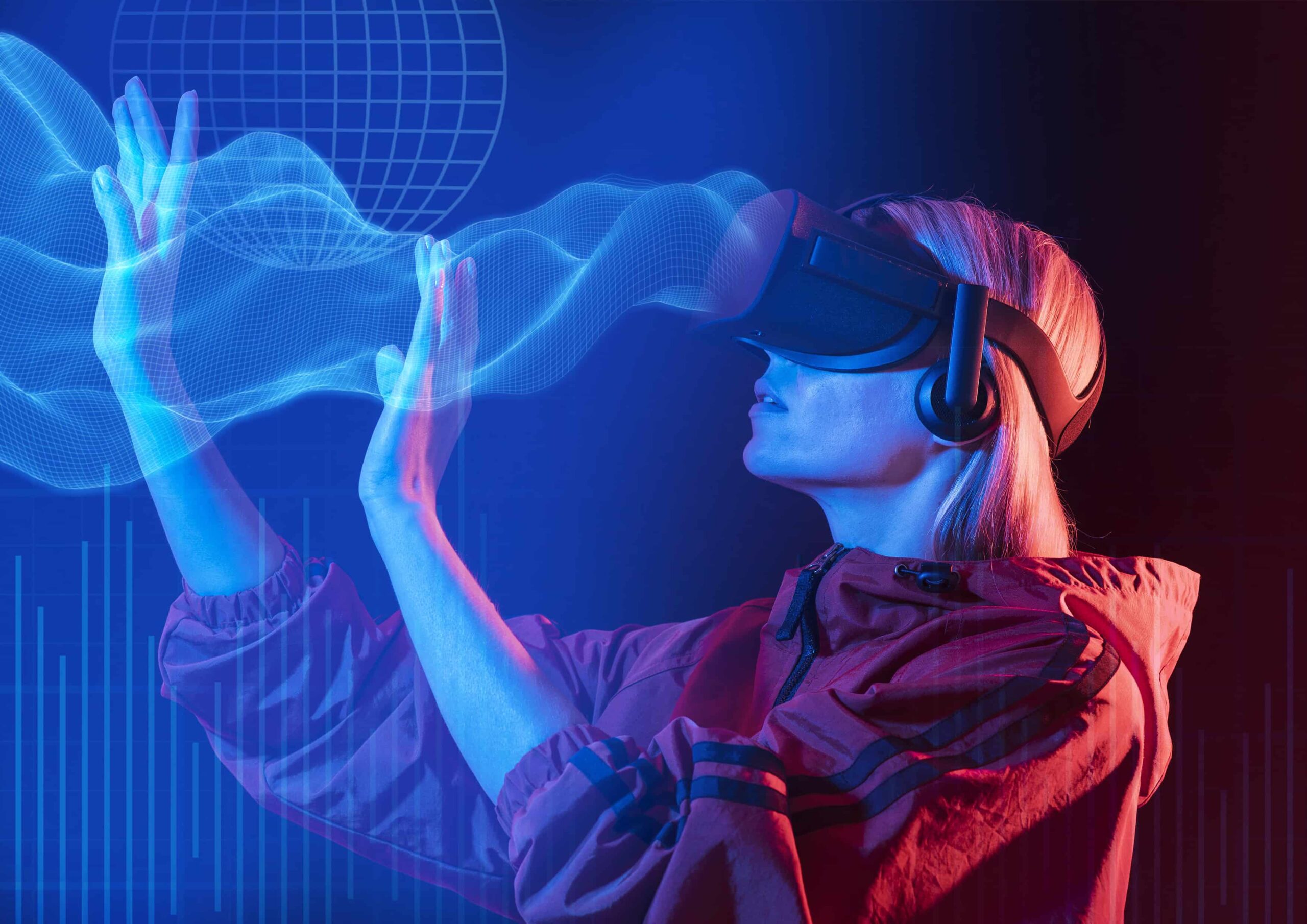
While online marketing channels offer extensive reach and targeting capabilities, offline marketing strategies remain valuable for enhancing brand awareness, particularly within local communities or specific demographics.
Incorporating offline tactics such as traditional advertising (e.g., print ads, radio spots, billboards), direct mail campaigns, event sponsorships, and participation in trade shows or community events can complement your digital efforts and reach audiences who may be less active online.
Remember, consistency, authenticity, and relevance are key to successfully executing these strategies and making a lasting impact on your target audience.
Successful Brand Awareness Campaigns
Successful brand awareness campaigns can increase your brand visibility and engagement. Various brands have implemented effective strategies to enhance their brand awareness and leave a lasting impact on their target audience.
Below, we’ll explore successful brand awareness campaigns and the key factors contributing to their success, offering valuable insights and inspiration.
Spotify
Spotify’s brand awareness campaign hit all the right notes by spreading its catchy playlists across various platforms, from TV ads to social media. Personalized playlists like “Discover Weekly” made users feel understood, while influencer partnerships and user-generated content kept everything exciting.
By engaging with the community through interactive features like “Year in Review,” Spotify created a sense of belonging and turned listeners into loyal fans. This is all while keeping its branding consistent and recognizable.
Dropbox
Dropbox transformed how we store and share files with its user-friendly cloud storage platform. Dropbox rapidly gained traction among professionals and students through clever marketing campaigns and word-of-mouth referrals.
With its user-friendly interface and smooth integration across devices, Dropbox made file management effortless and accessible to everyone, becoming an indispensable tool for productivity in the digital age.
Beyond Meat
Beyond Meat revolutionized the food industry with its innovative plant-based meat alternatives. Through strategic partnerships with fast-food chains and grocery stores, Beyond Meat made its products accessible to mainstream consumers, challenging the notion that meat alternatives lacked flavor and excitement.
Their mouthwatering advertisements showcased sizzling burgers and savory sausages, enticing even the most skeptical carnivores to try their products and join the movement toward a more sustainable future.
Coca-Cola
Coca-Cola has been equivalent with happiness and refreshment for generations. Through timeless commercials, iconic slogans like “Open Happiness,” and heartwarming campaigns like the “Share a Coke” initiative, Coca-Cola has solidified its place in consumers’ minds.
By tapping into emotions and fostering a sense of connection, Coca-Cola continues to spread joy and bring people together. It is more than just a beverage; it symbolizes shared moments and memories.
Rare Beauty
Rare Beauty, founded by singer and actress Selena Gomez, has made waves in the beauty industry with its inclusive approach to makeup. Embracing diversity and self-expression, Rare Beauty celebrates individuality through its vibrant products and empowering messaging.
Rare Beauty has cultivated a loyal fan base by tapping into Gomez’s star power and actively engaging with its diverse community of fans. They’re all about changing what people think beauty is and making everyone feel good about themselves.
Nike
One iconic example of a successful brand awareness campaign is Nike’s “Just Do It” campaign. Through powerful storytelling and visuals, Nike inspired millions to push their limits.
Nike has become synonymous with athletic achievement and empowerment by associating its brand with perseverance, determination, and excellence. From its signature swoosh logo to its iconic tagline, Nike’s brand identity is instantly recognizable worldwide, making it a dominant force in the sports apparel industry.
Nike inspires individuals to pursue their dreams through consistent messaging and innovative marketing strategies.
Apple
Apple’s “Get a Mac” commercials featured a cool Mac character and a more traditional PC character, showcasing the simplicity and reliability of Mac computers compared to PCs. Through humor and relatable scenarios, Apple communicated the benefits of choosing its products.
The commercials resonated with audiences, creating a strong emotional connection and reinforcing Apple’s image as a brand that values innovation and user experience. With its groundbreaking technology, Apple has become a leader in the tech industry.
From the iconic iPod to the revolutionary iPhone, Apple continues to set trends and shape the future of technology as a beloved and influential brand worldwide.
Mountain Dew
Mountain Dew, a fizzy drink many appreciate for its citrus taste, was significantly impacted globally with its bold and energetic brand promotions. Mountain Dew positioned itself as the preferred beverage for thrill-seekers and adventure enthusiasts by sponsoring extreme sports and producing flashy commercials showcasing thrilling actions.
With catchy slogans like “Do the Dew,” they captured the attention of young audiences everywhere, keeping them coming back for more of that refreshing citrus kick.
Old Spice
Old Spice reinvented its image with the hilarious and memorable television advertising campaign “The Man Your Man Could Smell Like.” With over-the-top humor and absurd scenarios, Old Spice captured the attention of young and old audiences, redefining what it means to be masculine.
By embracing satire and viral marketing, Old Spice successfully revitalized its brand and became a cultural phenomenon that continues to leave a lasting impression.
The successful brand awareness campaigns mentioned above used effective techniques to capture the audience’s attention and leave a lasting impression. From Nike’s powerful storytelling to Apple’s clever comparison ads, these brands used emotion, humor, and innovation to connect with their target audience.
Coca-Cola’s timeless messaging and Rare Beauty’s inclusive approach further demonstrate the importance of authenticity and inclusivity in brand campaigns.
Success examples show the importance of consistency, engagement, and new technologies in standing out in a crowded marketplace. However, starting and running successful brand awareness campaigns can be challenging.
Challenges in Brand Awareness
Building brand awareness comes with challenges. From facing competition to working within tight budgets, you must overcome various obstacles to make your mark in the market.
Market Saturation
Breaking through noise becomes challenging with competitors already established and saturating the field. Every corner seems occupied, leaving little room for new entrants to shine. Differentiating yourself in such an environment requires creativity and perseverance.
It’s not merely about providing something quite similar; it’s about discovering a method that sets you apart from the competitors and connects with your audience in a way others haven’t.
Limited Budget
Budget constraints can limit your ability to explore grand marketing strategies. Yet, within these constraints lies an opportunity for innovation. Standing out doesn’t always necessitate big spending; it requires smart thinking.
Leveraging social media, guerrilla marketing tactics, or strategic partnerships can amplify your reach without draining your finances. It’s about finding cost-effective ways to make a memorable impression on your audience, even when resources are scarce.
Establishing Credibility and Gaining Trust
Consumers are now wary of empty promises and dubious claims. Building trust takes time and effort, requiring consistent delivery of promises and transparency in communication.
Authenticity is the cornerstone of credibility; showcasing your values, integrity, and expertise can help create trust among your audience. Encouraging reviews, testimonials, and endorsements can further solidify your reputation, demonstrating to potential customers that you’re worth their trust.
Consistency in Messaging
Consistency is the thread that weaves your brand together. Your messaging should convey a coherent narrative across all touchpoints, reinforcing your brand identity and values. Conflicting messages can confuse and alienate your audience, diluting your brand’s impact.
Establishing brand guidelines ensures that everyone within your organization communicates with a unified voice, maintaining clarity and coherence in your messaging. Consistency breeds familiarity and trust, whether through advertising, social media, or customer interactions.
Measuring ROI
Understanding your brand awareness efforts’ return on investment (ROI) is essential for refining your strategies and maximizing your resources. With clear metrics, it’s easier to measure the effectiveness of your campaigns or justify further investments.
Monitoring metrics like website traffic, social media engagement, and lead generation offers valuable insights into the effectiveness of your brand awareness efforts.
Analyzing these metrics lets you identify what’s working well and where adjustments are needed, ensuring that every dollar spent contributes to your objectives.
Improving Brand Awareness
Raising awareness from brand recognition to brand recall and top-of-mind awareness is like climbing a mountain with no clear path. You start at ground zero, where nobody knows you exist. The first challenge is breaking through the noise and capturing people’s attention among countless other brands vying for their consideration.
Even if people notice your brand, making them remember it among all the choices is tough. Our minds choose what to remember, so remembering needs seeing it a lot and having memorable experiences. But even when they remember you, being their first choice for a product or service is difficult. Being top-of-mind needs always reminding them and being different from other brands.
To tackle these challenges, you need a strategic approach that requires a deep market understanding. Begin by defining your target audience and recognizing their needs, preferences, and pain points. Tailor your messaging and branding efforts to resonate with them on a personal level. Use a mix of channels to reach them where they are most receptive, whether through social media, email marketing, or experiential events.
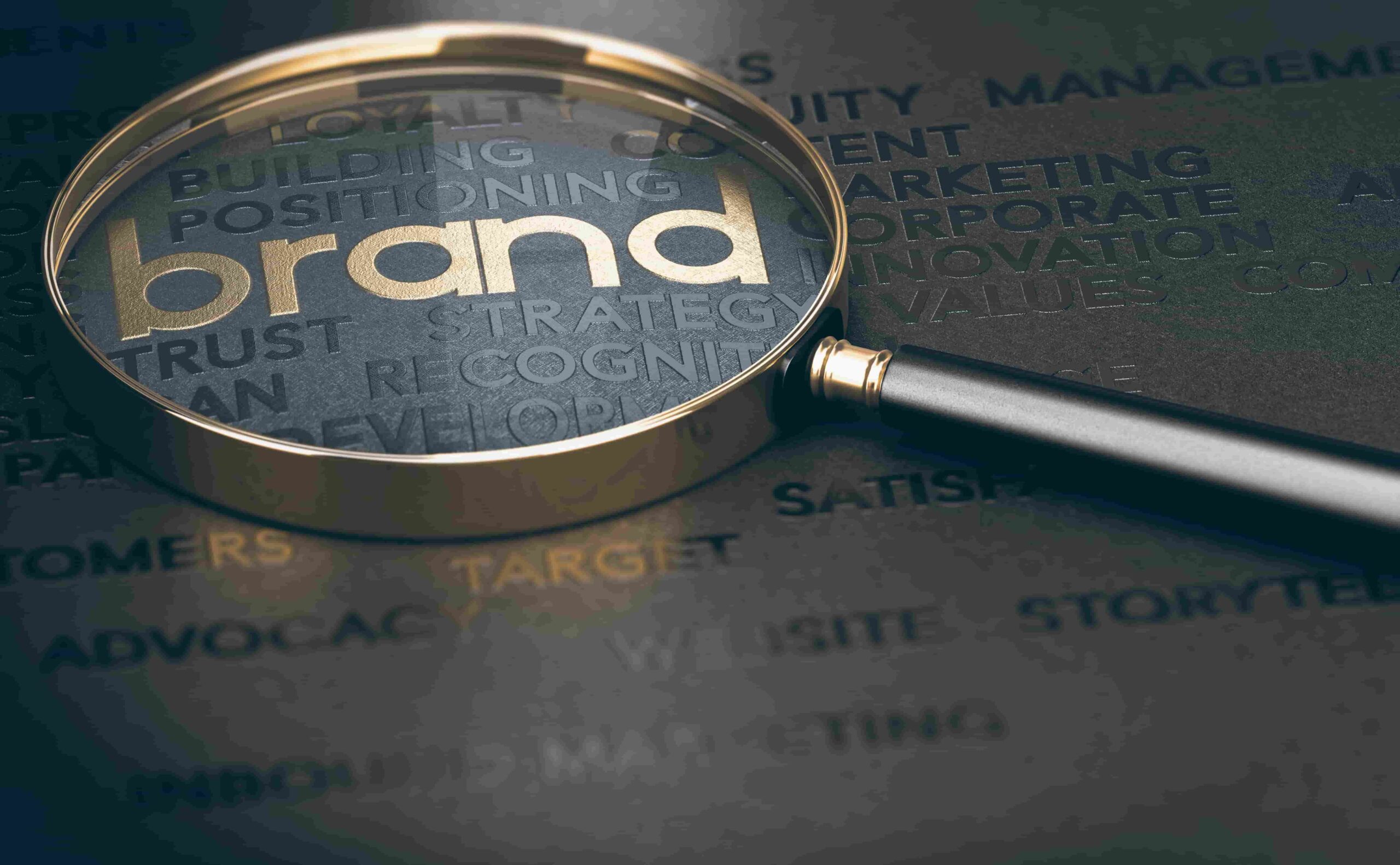
Consistency is key; ensure your brand’s visuals, voice, and values are consistently communicated across all touchpoints. Share your brand’s journey, values, and impact in a compelling way that inspires loyalty and advocacy. Encourage user-generated content and word-of-mouth referrals to amplify your reach organically. Lastly, invest in ongoing measurement and analysis to evaluate your development and identify areas for improvement.
By continuously adapting your approach based on data-driven analysis, you can steadily climb the ladder from zero awareness to becoming a household name in the minds of your target audience.
conclusion
Building brand awareness demands a strategic approach that involves tackling each challenge with precision and foresight. Creativity and resourcefulness are your greatest allies in overcoming obstacles like fierce competition and budget constraints. For instance, using the power of social media or forming strategic partnerships can enhance your reach without draining your finances. Consistency and trust are your guiding lights, anchoring your messaging across diverse platforms and touchpoints.
Data-driven insights are also important to measure the impact of your efforts, enabling you to refine and optimize your strategies for maximum effectiveness. But this isn’t the end of the road. Your adventure in brand awareness keeps going, with more to discover and achieve. By remaining flexible, innovative, and engaged with your audience, your brand will continue to expand and leave a lasting impression. If you want to increase your brand awareness by captivating and engaging your audience like never before, contact us today and discover the power of immersive brand experiences.

Fareena
